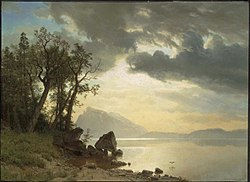Myth of an Island Queen
- Cheryl Anne Stapp

- Aug 10, 2022
- 3 min read

Once an intriguing fable captures the collective human mind, it is very hard to dismiss it—especially if the stark truth is less attractive. So it was that Spanish explorers—based on a wildly popular 16th century fictitious adventure novel—knew in their hearts that California was an island “on the right hand of the Indies” ruled by a beautiful black warrior-woman named Queen Calafia, whose all-female subjects had weaponry and ornaments made of gold. And so it also was … that European map makers continued to depict California as an island, for a century after those same explorers had seen the reality with their own eyes.
In August 1540 Hernando de Alarcón sailed up the Gulf of California to the mouth of the Colorado River, was able to ascend it as far as the confluence of the Gila, and so became the first European to see California, albeit across an expanse of swift river water. By this time the Spanish realized that part of California was a peninsula, and were speculating that the rest of it was part of a mainland. Meanwhile, they were developing two ideas: that by following the Pacific coastline northward they might sail to Asia; and that somewhere up there, a Northwest Passage existed. Three years later Juan Rodriquez Cabrillo received orders to set out on a sea voyage, with instructions to locate the entrance to this supposed Northwest Passage, and perhaps sail on to China.
Cabrillo had two ships, both with lateen sails, which enabled the vessels to sail closer to the wind than square-rigged ships. He left Mexico’s new west coast port of Navidad in June, rounded the peninsula of Baja (Lower) California, and three months later found an excellent port: today’s San Diego. A storm halted his progress for eight days, after which he boldly sailed north, to discover Point Reyes. But he missed the opening to San Francisco Bay, and, forced southward by strong winds and ocean currents, found Monterey Bay instead. Cabrillo died on the Channel Islands, where he had intended to spend the winter. His pilot Bartolomé Ferrelo took over the expedition, reaching the latitude of the present California-Oregon border before turning back.
In the mid-1560s more expeditions followed, after Spain had established a permanent colony in the Philippines and needed temporary safe harbors on the Pacific Coast for their galleons traveling the new trade route from the Philippines back to Acapulco. But none stayed on land very long, or explored very far past the coastline. The Indians they met knew nothing of gold, they found no trace whatever of Queen Calafia, they failed to find a watercourse that flowed clear across the continent as a passageway from sea to sea; and they were otherwise unimpressed with the land. Sebastian Vizcaino re-discovered Monterey Bay in 1602, and his second ship possibly reached southern Oregon before being forced to turn back because the crew was incapacitated with scurvy.
Afterwards Spain lost interest in California. Nevertheless, Spain had indeed found it: the mythical island that, as it turned out, was no island at all. A century and a half would pass before King Carlos III, threatened by rumors of other nations encroaching on his New World province, would send a group of Franciscan priests northward from Baja to establish a Spanish presence in Alta California with a string of missions. And another eighty years would go by before an American discovered, in a mountain river, the gold that the Spanish had set out to find on a fabled island so long ago.




Comments